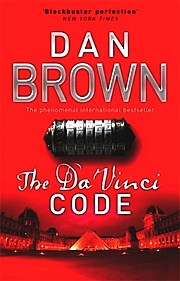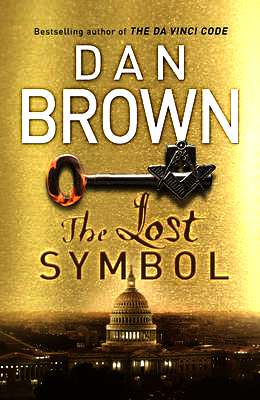|
Dan
Brown helped me enormously, when I was first seriously thinking about
writing the book I'd always wanted to write. Not directly of course, but
I read a couple of Dan Brown's books (four actually), and finally the Da
Vinci Code, which I thought was his masterpiece and far better than the
film it spawned - although the film was itself fair entertainment, so
don't get me wrong.
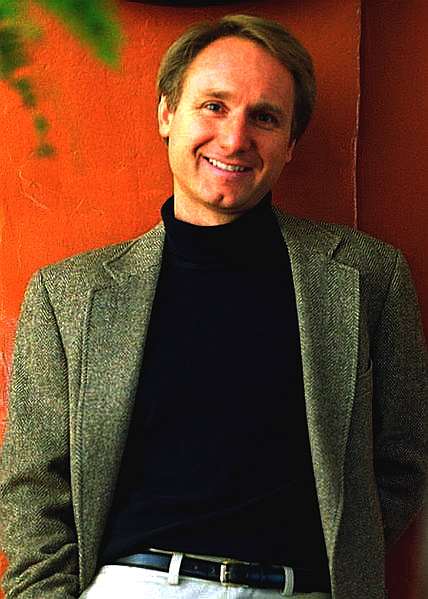
Dan
Brown book cover photograph
Though
I really love Tom Hanks (especially in the Road to Perdition, Forest
Gump and Big, to name a few) I didn't think he was the best choice to play the symbologist in
the Da Vinci Code. Sorry Tom. It's just my opinion. I yearned for
slightly more intelligent horsepower.
Dan Brown
was born on June 22nd 1964. He is an American author of thriller fiction, best known for the 2003
best-selling novel, The Da Vinci Code. Brown's novels, which are treasure hunts set in a 24-hour time
period, feature the recurring themes of cryptography, keys, symbols, codes, and conspiracy theories. His books have been translated into over 40 languages, and as of 2009, sold over 80 million copies. Two of them, The Da Vinci Code and Angels & Demons, have been adapted into feature films. The former opened amid great controversy and poor
reviews, while the latter did only slightly better with critics.
Brown's novels that feature the lead character Robert Langdon also include historical themes and Christianity as recurring motifs, and as a result, have generated controversy. Brown states on his website that his books are not anti-Christian, though he is on a 'constant spiritual journey' himself, and says that his book The Da Vinci Code is simply "an entertaining story that promotes spiritual discussion and debate" and suggests that the book may be used "as a positive catalyst for introspection and exploration of our faith."
Early life and education
Dan Brown was born and raised in Exeter, New Hampshire, USA, the eldest of three children. Brown grew up on the campus of Phillips Exeter Academy, where his father, Richard G. Brown, was a teacher of mathematics, and wrote textbooks from 1968 until his retirement in
1997. Both of Brown's parents are also singers and musicians, having served as church choir masters, with his mother also serving as church
organist. Brown was raised an Episcopalian.
Brown's interest in secrets and puzzles stems from their presence in his household as a child, where codes and ciphers were the
lynchpin tying together the mathematics, music and languages in which his parents worked. The young Brown spent hours working out anagrams and crossword puzzles, and he and his siblings participated in elaborate treasure hunts devised by their father on birthdays and holidays. On
Christmas, for example, Brown and his siblings did not find gifts under the tree, but followed a treasure map with codes and clues throughout their house and even around town to find the
gifts. Brown's relationship with his father inspired that of Sophie Neveu and Jacques Sauniere in The Da Vinci Code, and Chapter 23 of that novel was inspired by one of his childhood treasure
hunts.
After graduating from Phillips Exeter, Brown attended Amherst College, where he was a member of Psi Upsilon fraternity. He played squash, sang in the Amherst Glee Club, and was a writing student of visiting novelist Alan Lelchuk. Brown spent the 1985 school year abroad in Seville,
Spain, where he was enrolled in an art history course at the University of
Seville. Brown graduated from Amherst in 1986.
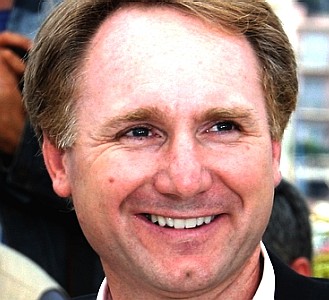
Songwriter and pop
singer After graduating from Amherst, Brown dabbled with a musical career, creating effects with a synthesizer, and self-producing a children's cassette entitled SynthAnimals, which included a collection of tracks such as "Happy Frogs" and "Suzuki Elephants"; it sold a few hundred copies. He then formed his own record company called Dalliance, and in 1990 self-published a CD entitled Perspective, targeted to the adult market, which also sold a few hundred copies.
In 1991 he moved to Hollywood to pursue a career as singer-songwriter and pianist. To support himself, he taught classes at Beverly Hills Preparatory School.
He also joined the National Academy of Songwriters, and participated in many of its events. It was there that he met Blythe Newlon, a woman 12 years his senior, who was the Academy's Director of Artist Development. Though not officially part of her job, she took on the seemingly unusual task of helping to promote Brown's projects; she wrote press releases, set up promotional events, and put him in contact with individuals who could be helpful to his career. She and Brown also developed a personal relationship, though this was not known to all of their associates until 1993, when Brown moved back to New Hampshire, and it was learned that Blythe would accompany him. They married in 1997, at Pea Porridge Pond, a location near Conway, New
Hampshire.
In 1993, Brown released the self-titled CD Dan Brown, which included songs such as "976-Love" and "If You Believe in Love."
In 1994, Brown released a CD titled Angels & Demons. Its artwork was the same ambigram by artist John Langdon, which he later used for the novel Angels &
Demons. The liner notes also again credited his wife for her involvement, thanking her "for being my tireless
co-writer, co-producer, second engineer, significant other, and therapist." The CD included songs such as "Here in These Fields" and the religious ballad "All I
Believe."
Brown and Blythe moved to his home town in New Hampshire in 1993. Brown became an
English teacher at his alma mater Phillips Exeter, and gave Spanish classes to 6th, 7th, and 8th graders at Lincoln Akerman School, a small school for K–8th grade with about 250 students, in Hampton
Falls.
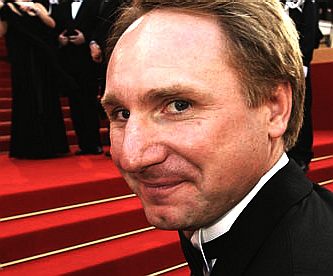
Dan
Brown at Cannes
Writing career
While on holiday in
Tahiti in
1993, Brown read Sidney Sheldon's novel The Doomsday Conspiracy, and was inspired to become a writer of
thrillers. He started work on Digital Fortress, setting much of it in Seville, Spain, where he had studied in 1985. He also co-wrote a humor book with his wife, 187 Men to Avoid: A Guide for the Romantically Frustrated Woman, under the pseudonym "Danielle Brown." The book's author profile reads, "Danielle Brown currently lives in New England: teaching school, writing books, and avoiding men." The copyright is attributed to Dan Brown.
In 1996, Brown quit teaching to become a full-time writer. Digital Fortress was published in 1998. His wife, Blythe, did much of the book's promotion, writing press releases, booking Brown on talk shows, and setting up press interviews. A few months later, Brown and his wife released The Bald Book, another humor book. It was officially credited to his wife, though a representative of the publisher said that it was primarily written by Brown. Brown subsequently wrote Angels & Demons and
Deception Point, released in 2000 and 2001 respectively, the former of which was the first to feature the lead character, Harvard symbology expert Robert Langdon.
Brown's first three novels had little success, with fewer than 10,000 copies in each of their first printings. His fourth novel, The Da Vinci Code, became a bestseller, going to the top of the New York Times Best Seller list during its first week of release in 2003. It is now credited with being one of the most popular books of all time, with 81 million copies sold worldwide as of
2009. Its success has helped push sales of Brown's earlier books. In 2004, all four of his novels were on the New York Times list in the same
week, and in 2005, he made Time magazine's list of the 100 most influential people of the year. Forbes magazine placed Brown at #12 on their 2005 "Celebrity 100" list, and estimated his annual income at US$76.5 million. The Times estimated his income from Da Vinci Code sales as $250 million.
Brown's third novel featuring Robert Langdon, The Lost Symbol, was released on September 15,
2009. According to the publisher, on its first day the book sold over one million in hardcover and e-book versions in the U.S., the U.K. and Canada, prompting the printing of 600,000 hardcover copies in addition to the five million first
printing. The story takes place in Washington D.C. over a period of 12 hours, and features the Freemasons. Brown's promotional website states that puzzles hidden in the book jacket of The Da Vinci Code, including two references to the Kryptos sculpture at CIA Headquarters in Langley, Virginia, give hints about the sequel. This repeats a theme from some of Brown's earlier work. For example, a puzzle at the end of the book Deception Point decrypts to the message, "The Da Vinci Code will
surface."
Brown has stated that he has ideas for about 12 future books featuring Robert
Langdon. The question is how many of these might be realised?
Characters in Brown's books are often named after real people in his life. Robert Langdon is named after John Langdon, the artist who created the ambigrams used for the Angels & Demons CD and novel. Camerlengo Carlo Ventresca is named after "On A Claire Day" cartoonist friend Carla Ventresca. In the Vatican Archives, Langdon recalls a wedding of two people named Dick and Connie, which are the names of his parents. Robert Langdon's editor Jonas Faukman, is named after Brown's real life editor Jason Kaufman. Brown also said that characters were based on a New Hampshire librarian, and a
French teacher at Exeter, Andre Vernet. Cardinal Aldo Baggia, in Angels and Demons, is named after Aldo Baggia, instructor of modern languages at Phillips Exeter Academy.
In interviews, Brown has said that his wife is an art historian and painter. When they met, she was the Director of Artistic Development at the National Academy for Songwriters in Los Angeles. During the 2006 lawsuit over alleged copyright infringement in The Da Vinci Code, information was introduced at trial that showed that Blythe did research for the
book. In one article, she was described as "chief researcher."
Influences and habitsIn addition to Sidney Sheldon, Dan Brown has been quite vocal about a number of other literary influences who have inspired his writing. He appreciates wit and humor, as shown when he talked about
Shakespeare's Much Ado About Nothing: "I didn't understand how funny this play Much Ado About Nothing truly was until I became an English teacher and had to teach it. There is no wittier dialogue
anywhere." He also lists personal friend, mystery writer Harlan Coben, and Robert Ludlum's Bourne series of books. On Ludlum, he states, "Ludlum's early books are complex, smart, and yet still move at a lightning pace. This series got me interested in the genre of big-concept, international
thrillers." Recurring elements that Brown prefers to incorporate into his novels include a simple hero pulled out of their familiar setting and thrust into a new one with which they are unfamiliar, strong female characters, travel to interesting locations, and a 24-hour time frame in which the story takes
place.
Because of the research-intensive nature of his novels, Brown can spend up to two years writing them. To remain focused on such projects, Brown ensures that when he chooses a theme for the novel (what he refers to as the "big idea"), and its subject, that they be those that can hold his interest. In Brown's view, the ideal topic does not have an easily defined right or wrong view, but presents a moral grey area that can lend itself to debate. Because his favorite subjects include codes, puzzles,
treasure hunts, secretive organizations and academic lectures on obscure topics, he tends to incorporate those into his novels. Because Brown considers writing to be a discipline that requires constant practice, he has developed a routine to maintain his abilities. He rises at 4:00am when there are no distractions (a practice he began with Digital Fortress when he had two daytime teaching jobs) and when he feels most productive, in order to give symbolic importance to the first order of business each day. He keeps an antique hourglass on his desk, so that he can stop briefly every hour to do push-ups, sit-ups and stretching exercises to keep his blood
flowing. Brown does his writing in his loft. He has also told fans that he uses inversion therapy to help with writer's block. He uses gravity boots and says, "hanging upside down seems to help me solve plot challenges by shifting my entire
perspective."
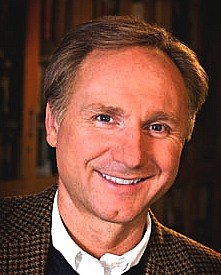
Film adaptations
In 2006, Brown's novel The Da Vinci Code was released as a film by
Columbia Pictures, with director Ron Howard; the film starred Tom Hanks as Robert Langdon, Audrey Tautou as Sophie Neveu and Sir Ian McKellen as Sir Leigh Teabing. It was much anticipated and served to launch the 2006 Cannes Film Festival, though it received overall poor reviews. It currently has a 24% rating at the film review aggregator website Rotten Tomatoes, derived from 165 negative reviews of the 214
counted. It was later listed as one of the worst films of 2006 on Ebert & Roeper, but also the second highest grossing film of the year, pulling in
$750 million USD
worldwide. Brown was listed as one of the executive producers of the film The Da Vinci Code, and also created additional codes for the film. One of his songs, "Phiano," which Brown wrote and performed, was listed as part of the film's soundtrack. In the film, Brown and his wife can be seen in the background of one of the early book signing scenes.
The next film, Angels & Demons, was released on May 15, 2009, with Howard and Hanks returning. It, too, garnered mostly negative reviews, though critics were kinder to it than to its predecessor. As of September
2009, it has a 36% meta-rating at Rotten
Tomatoes.
A film adaptation of The Lost Symbol is due for 2012
release.
Copyright infringement cases
In August 2005, author Lewis Perdue unsuccessfully sued Brown for plagiarism, on the basis of claimed similarity between The Da Vinci Code and his novels, The Da Vinci Legacy (1983) and Daughter of
God (2000). Judge George Daniels said, in part: "A reasonable average lay observer would not conclude that The Da Vinci Code is substantially similar to Daughter of
God."
In April 2006, Brown won a copyright infringement case brought by authors Michael Baigent and Richard Leigh, who claimed that Brown stole ideas from their 1982 book Holy Blood Holy Grail for his 2003 novel The Da Vinci Code. It was in the book Holy Blood Holy Grail that Baigent, Leigh, and co-author Henry Lincoln had advanced the theory that
Jesus and Mary Magdalene married and had a child and that the bloodline continues to this day. Brown even alluded to the two authors' names
in his book. Leigh Teabing, a lead character in both the novel and the film, uses Leigh's name as the first name, and anagrammatically derives his last name from Baigent's. Mr Justice Peter Smith found in Brown's favor in the case, and as a private amusement, embedded his own Smithy code in the written
judgment.
On March 28, 2007, Brown's publisher, Random House, won an appeal copyright infringement case. The Court of Appeal of England and
Wales rejected the efforts from Baigent and Leigh, who became liable for paying legal expenses of nearly US$6
million. A contributing factor for the outcome of the case is that these authors presented their work as non-fiction, whereas fiction writers often draw upon non-fiction resources for content research.
Philanthropy
In October 2004, Brown and his siblings donated US$2.2 million to Phillips Exeter Academy in honor of their father, to set up the Richard G. Brown Technology Endowment to help "provide
computers and high-tech equipment for students in
need."
Criticism
Brown's prose style has been criticized as clumsy. Much criticism also centers on Brown's claim found in the preface to The Da Vinci Code that the novel is based on fact in relation to Opus Dei and the Priory of Sion, and that "all descriptions of artwork, architecture, documents and secret rituals in [the] novel are
accurate."
In an interview with Matt Lauer on The Today Show in September 2009, Brown responded by saying, "I do something very intentional and specific in these books. And that is to blend fact and fiction in a very modern and efficient style, to tell a story. There are some people who understand what I do, and they sort of get on the train and go for a ride and have a great time, and there are other people who should probably just read somebody
else."
WORKS: CDs SynthAnimals, a children's album
Perspective, 1990, Dalliance. Music CD
Dan Brown, 1993, DBG Records
Angels & Demons, 1994, DBG Records
Musica Animalia, 2003, a children's CD comprising 15 tracks songs portraying animals in poem & song. Proceeds benefited for the Families First
charity.
Humor writing
187 Men to Avoid: A Survival Guide for the Romantically Frustrated Woman, 1995, Berkley Publishing Group (co-written with his wife under the pseudonym Danielle Brown). ISBN 0-425-14783-5, Scheduled for re-release in August 2006
The Bald Book, 1998, co-written with his wife Blythe Brown. ISBN 0-7860-0519-X
Novels
-
Digital Fortress, 1998
-
Angels & Demons, 2000
-
Deception Point, 2001
-
The Da Vinci Code, 2003
-
The Lost Symbol, 2009
Films
-
The Da Vinci Code, 2006
-
Angels & Demons, 2009
-
The Lost Symbol, 2012
The
da Vinci Code - synopsis:
Harvard
professor Robert Langdon receives an urgent late-night phone call while on
business in Paris. The elderly curator of the Louvre has been brutally
murdered inside the museum. Alongside the body, police have found a series
of baffling codes and they set about trying to prove that Langdon is the
murderer.
Langdon
is saved several times by a gifted French cryptologist, Sophie Neveu. They
join forces to sort through a series of bizarre riddles, and find a trail
that leads to the works of Leonardo Da
Vinci, suggestive of a mystery that
answers one of the greatest mysteries of religious history. But, unless
Robert and Sophie act quickly to solve the puzzles ahead of an albino
monk, the historical clues could be lost forever.
The
Da Vinci Code sees Robert Langdon pulled into this race to assist the
authorities due to his specialist knowledge of religious symbolism. The
book takes us on a journey across Europe on a code-breaking, treasure hunt
with a downplayed relationship building between the two protagonists.
I
found the book to be extremely entertaining. I couldn't wait to read it
and fall into the world Dan Brown had created. My only criticism is the
Teabing character, who I felt, did not add up. Despite this, it is a great
story which moves along at a brisk pace to keep you guessing to the end.
The
Lost Symbol - synopsis: Harvard symbologist Robert Langdon is summoned at the last minute to
deliver an evening lecture in the Capitol Building in Washington
DC. Within moments of his arrival a severed hand with five
symbols on each digit is discovered at the epicenter of the Rotunda
pointing heavenward. Langdon recognises this as an ancient signpost to a
coveted concealed wisdom. The
hand is that of Langdon's mentor,
Peter Solomon, a prominent mason, who, it is clear has been brutally
kidnapped. Langdon realizes that his only hope of saving his friend's life
is to solve the clues to this mysterious summons and follow wherever it leads him.
Langdon finds himself quickly swept behind the facade of America's most
historic city into the unseen chambers, temples and tunnels therein. All that was familiar is transformed into a shadowy, clandestine
world of an artfully concealed past in which Masonic secrets and
never-before-seen revelations seem to be leading him to a single
impossible and inconceivable truth. This
is another superbly presented code bound symbolic romp. The Lost Symbol is
a clever, fast-paced thriller with surprises at every turn. The Lost Symbol
incorporates many of the
elements that entranced readers of The Da Vinci Code. The resourceful
symbologist, Robert Langdon, is back risking his life to crack another dangerous
mystery, this time involving the Freemasons, with the CIA
shadowing progress obstructively.
The ruthless criminal
antagonist, Mal’akh, is a
powerfully built eunuch liberally tattooed. Mal’akh wants to get his
hands on a Masonic pyramid thought to possesses powerful mystical secrets,
and is using Robert to locate it for him.
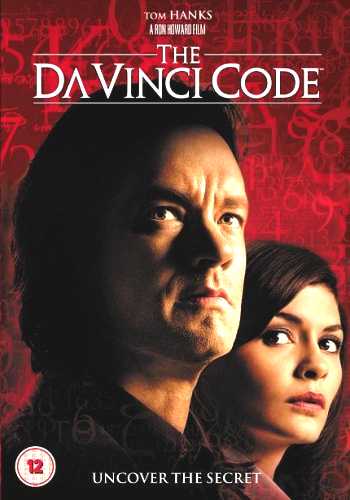
LINKS:
NOVELIST
INDEX
A - Z

|





